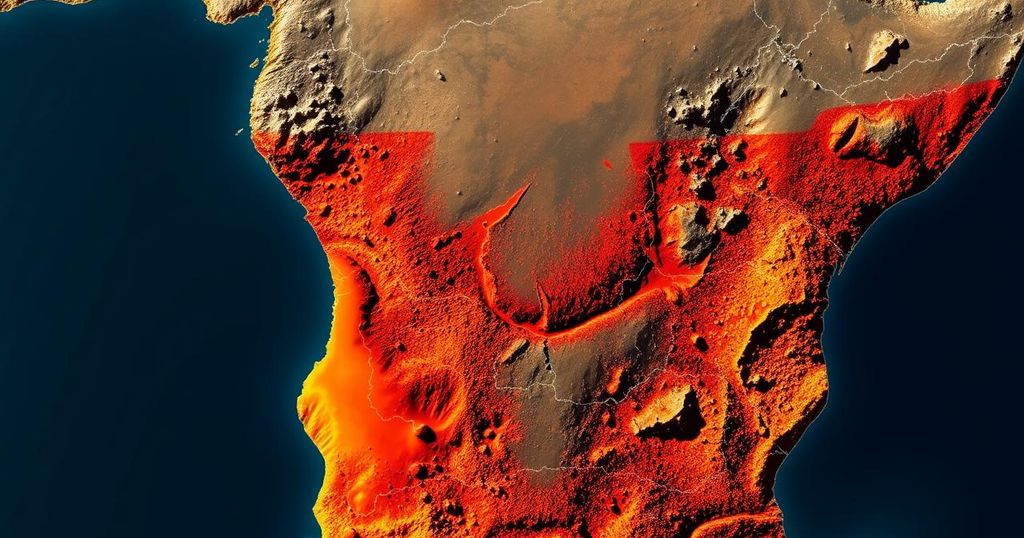Southern Africa Faces Historic Drought: Millions at Risk of Hunger
Southern Africa is facing an unprecedented drought, affecting over 27 million people and resulting in widespread malnutrition, particularly among children. The region, particularly countries like Zambia and Zimbabwe, has declared states of national disaster due to crop failures and livestock losses. The situation is exacerbated by climate change and the El Niño weather phenomenon, leading to severe shortages of food, electricity, and wildlife resources.
Southern Africa is currently grappling with its most severe drought in a century, which has severely impacted over 27 million individuals, according to the United Nations World Food Programme (WFP). The most affected countries—Lesotho, Malawi, Namibia, Zambia, and Zimbabwe—have all proclaimed states of national disaster as the ongoing drought continues to decimate their agricultural production and livestock. The situation is exacerbated in Angola and Mozambique, which are also experiencing significant challenges due to this unprecedented climatic event. The WFP warns that the crisis is likely to worsen as the region enters a critical lean season, beginning in October and anticipated to last until the next harvest in March or April 2024. WFP spokesperson Tomson Phiri highlighted the dire circumstances, stating, “A historic drought – the worst food crisis yet – has devastated more than 27 million lives across the region. Some 21 million children are malnourished.” The drought has been largely attributed to the El Niño weather phenomenon, which has caused below-average rainfall across Southern Africa. The prolongation of this situation is further intensified by rising temperatures associated with climate change, rendering the region even more vulnerable. In July, it was reported that this catastrophic event has obliterated up to 70 percent of the harvests in Zambia and 80 percent in Zimbabwe, according to Lola Castro, the WFP’s acting regional director for Southern Africa. Additionally, the lack of adequate rainfall has severely diminished hydropower generation capabilities, leading to widespread electricity shortages. The governments of Namibia and Zimbabwe have resorted to culling wildlife, including elephants, to address food shortages among their populations. This underscores the desperate measures being taken to combat the compounded crises of hunger and diminishing natural resources. Experts emphasize that sub-Saharan Africa’s heavy reliance on rain-fed agriculture makes it particularly susceptible to climate change impacts, hindering their ability to effectively respond to these recurring environmental challenges.
The continuing drought in Southern Africa represents a culmination of various climatic and socio-economic factors that have severely disrupted agricultural production and food security in the region. The UN and various humanitarian entities have emphasized the plight faced by millions due to failing crops and livestock, a direct consequence of changing weather patterns attributed to global climate change. Specifically, the phenomenon of El Niño has played a pivotal role in exacerbating drought conditions, leading to significant food shortages and malnutrition rates among children. The states of emergency declared by multiple nations reflect the urgency of the humanitarian situation, calling for collective action and support to alleviate the ongoing crisis.
The situation in Southern Africa exemplifies the severe impact of climate change and extreme weather events on food security and public health. With millions at risk of hunger and malnutrition, immediate global attention and intervention are critical to prevent further humanitarian disaster. The intertwined effects of climatic phenomena and socio-economic vulnerability necessitate robust, coordinated responses from both national and international organizations to strengthen resilience and ensure food security.
Original Source: www.aljazeera.com




Post Comment